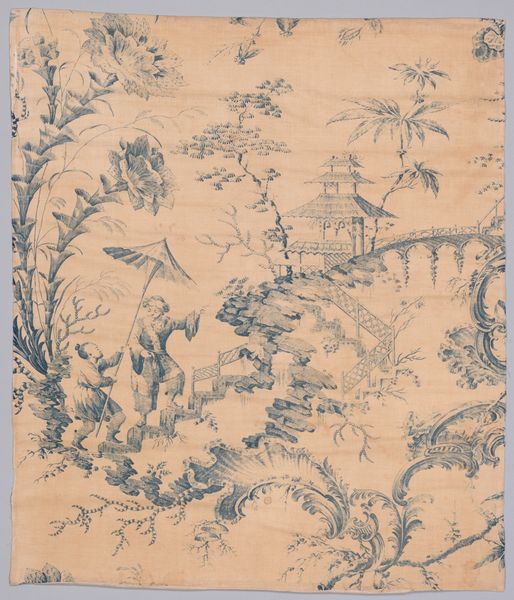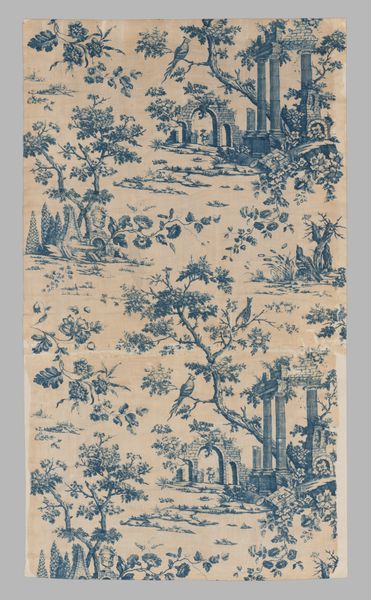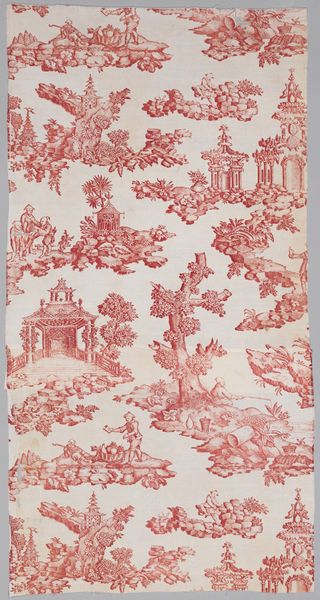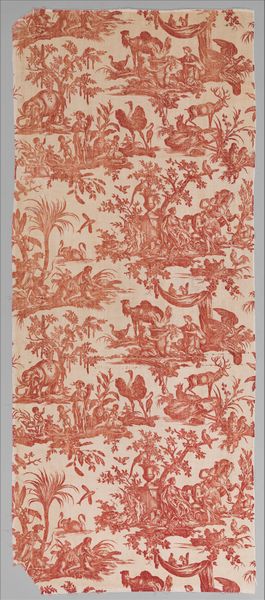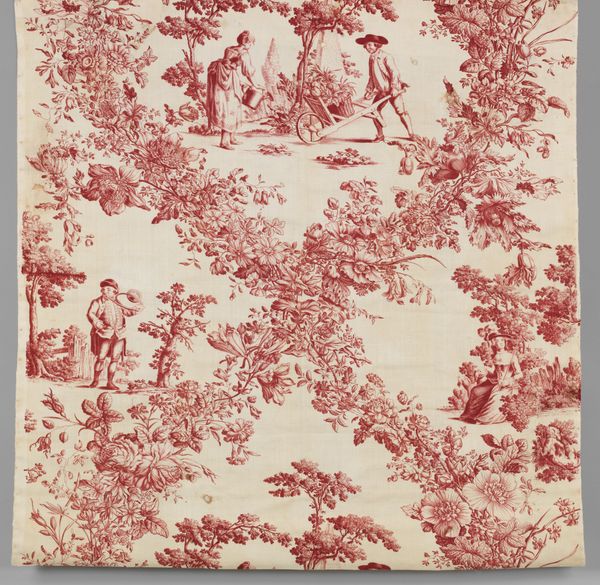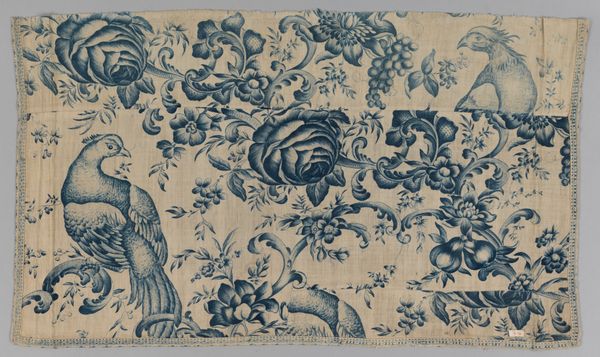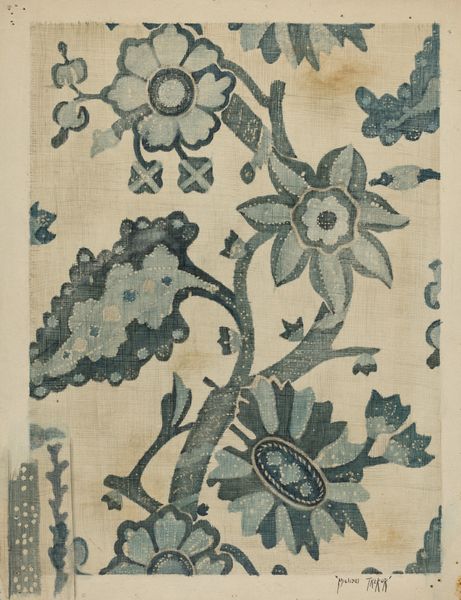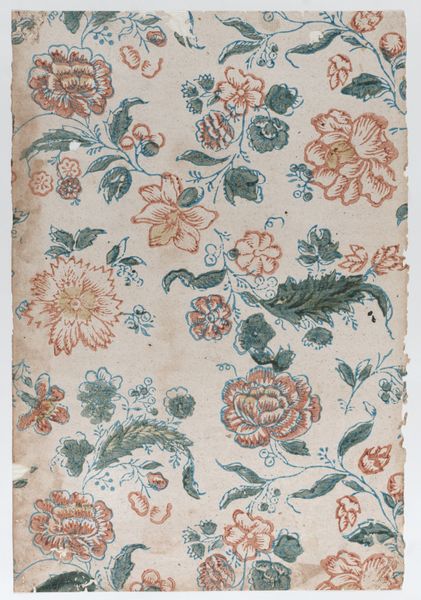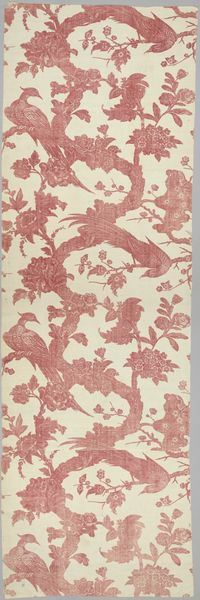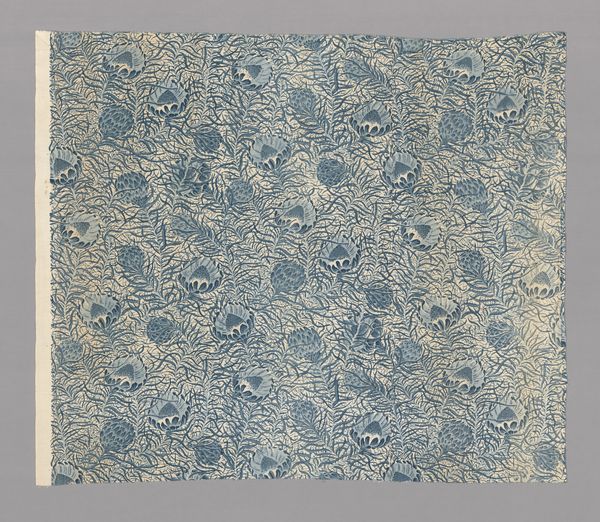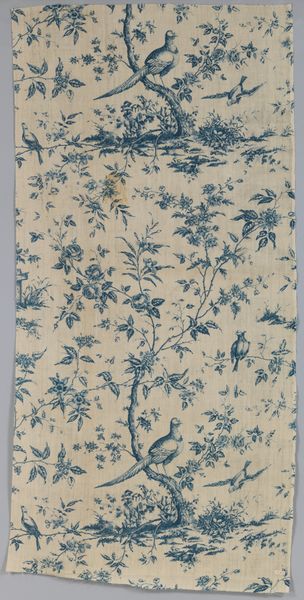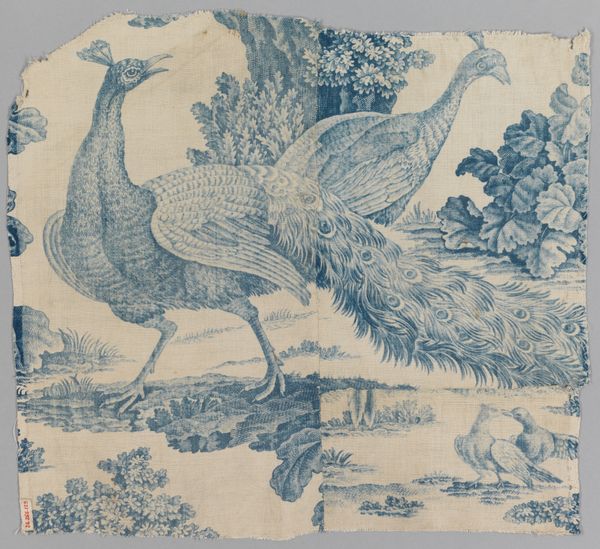
print, textile, sculpture, engraving
#
narrative-art
# print
#
textile
#
text
#
sculpture
#
fabric design
#
romanticism
#
men
#
genre-painting
#
textile design
#
decorative-art
#
imprinted textile
#
engraving
Dimensions: L. 37 3/4 x W. 27 1/2 inches 95.9 x 69.9 cm
Copyright: Public Domain
Curator: Standing before us is a “Pictorial print” that likely hails from around 1785 to 1795. Preserved in the Metropolitan Museum of Art's collection, this artwork uses engraving to depict idyllic scenes on textile. What's your first take? Editor: The blue and white palette creates such a soothing, almost dreamlike atmosphere. It's quite captivating. The arrangement of little narrative vignettes interspersed with floral motifs gives it a decorative, yet engaging, sensibility. Curator: Absolutely. These textiles became immensely popular, reflecting a romanticized view of pastoral life. The rising middle class sought ways to emulate aristocratic tastes and lifestyles through these consumer goods, which provided glimpses into the world of leisure. Editor: I wonder, though, about this "pastoral" ideal. How much did these images sanitize and erase the realities of labor and social hierarchy within the rural setting itself? It strikes me as important to recognize what narratives are being foregrounded, and what are conveniently left out of the picture. Curator: A valid point. The imagery, clearly rooted in Romanticism, promotes a carefully curated vision. When studying this textile, we must also analyze the market and audience, especially how textiles helped forge identities during a period of social upheaval and shifting power structures. Editor: Right. Consider how many hands were involved in its creation—the engravers, the textile workers, the designers—versus who ultimately consumed it. This tension tells an important story. There are so many layers when discussing class, labour, race and consumerism...It brings in to focus who exactly were excluded from this ideal that Romanticism puts out. Curator: Examining pieces such as this allows us to discuss the power structures within art. Thank you for pointing out these perspectives, which I feel encourage critical engagement with these art pieces. Editor: I find myself curious, especially with objects so intricately woven into daily life, the quiet but consistent ways they shape our understandings and assumptions. It serves as a powerful lesson on the importance of questioning and contextualizing images.
Comments
No comments
Be the first to comment and join the conversation on the ultimate creative platform.
